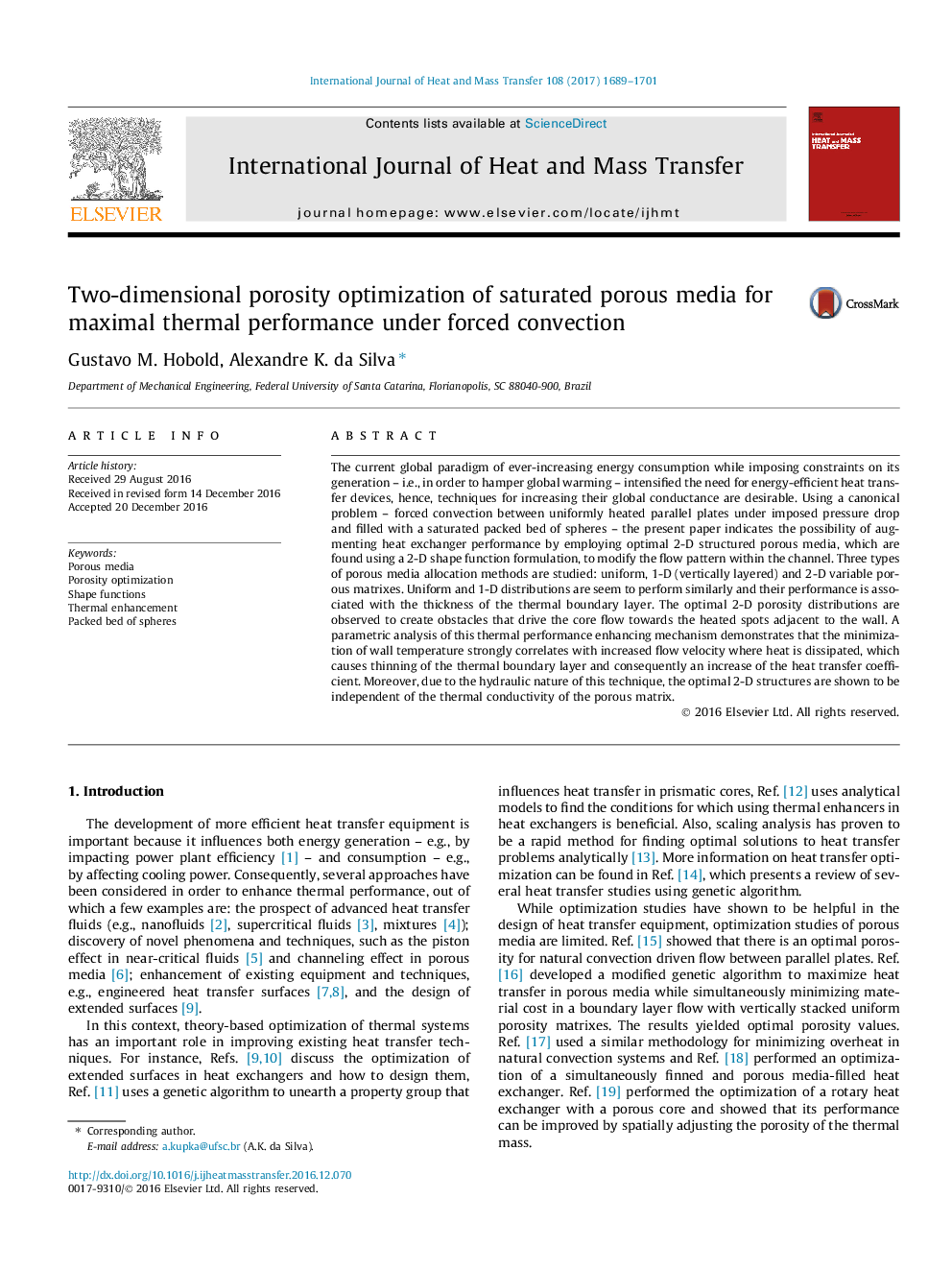| Article ID | Journal | Published Year | Pages | File Type |
|---|---|---|---|---|
| 4994395 | International Journal of Heat and Mass Transfer | 2017 | 13 Pages |
Abstract
The current global paradigm of ever-increasing energy consumption while imposing constraints on its generation - i.e., in order to hamper global warming - intensified the need for energy-efficient heat transfer devices, hence, techniques for increasing their global conductance are desirable. Using a canonical problem - forced convection between uniformly heated parallel plates under imposed pressure drop and filled with a saturated packed bed of spheres - the present paper indicates the possibility of augmenting heat exchanger performance by employing optimal 2-D structured porous media, which are found using a 2-D shape function formulation, to modify the flow pattern within the channel. Three types of porous media allocation methods are studied: uniform, 1-D (vertically layered) and 2-D variable porous matrixes. Uniform and 1-D distributions are seem to perform similarly and their performance is associated with the thickness of the thermal boundary layer. The optimal 2-D porosity distributions are observed to create obstacles that drive the core flow towards the heated spots adjacent to the wall. A parametric analysis of this thermal performance enhancing mechanism demonstrates that the minimization of wall temperature strongly correlates with increased flow velocity where heat is dissipated, which causes thinning of the thermal boundary layer and consequently an increase of the heat transfer coefficient. Moreover, due to the hydraulic nature of this technique, the optimal 2-D structures are shown to be independent of the thermal conductivity of the porous matrix.
Related Topics
Physical Sciences and Engineering
Chemical Engineering
Fluid Flow and Transfer Processes
Authors
Gustavo M. Hobold, Alexandre K. da Silva,
